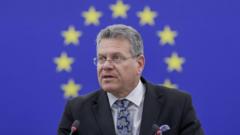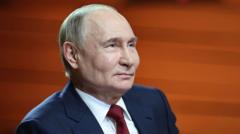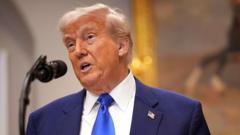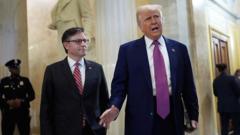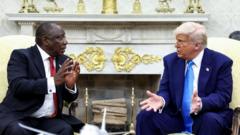Amid ongoing discussions, the Trump administration pivots towards aggressive tariff imposition, testing the EU's diplomatic strategies.
Trump's Strongarm Tactics: New Tariffs on EU Imports Loom

Trump's Strongarm Tactics: New Tariffs on EU Imports Loom
Tensions rise as Trump threatens a 50% tariff on European goods, disrupting longstanding trade negotiations.
The transatlantic economic relationship is on the brink of disruption as President Trump announces a stunning 50% tariff on European imports starting June 1. This significant move, detailed in a Truth Social post, comes in response to what Trump perceives as an unfair trade imbalance, citing the European Union's trade barriers and corporate penalties as major contributors.
"What we are witnessing is the dismantling of the traditional trade negotiation playbook," explains a leading trade analyst. Most notably, the EU, which has followed conventional wisdom in its negotiations with the U.S., now faces a tempestuous administration that embraces a confrontational style. While European officials had approached the dialogues with a cooperative spirit, it seems their attempts have been met with obstinacy from the Trump administration, which now views negotiations as a means to extract significant concessions from a perceived rival rather than as a platform for constructive collaboration.
Since taking office in January, Trump has been relentless in imposing tariffs, targeting a range of industries including steel, aluminum, and automobiles, while casting a wide net of threats towards most of America's trading partners. In a surprising twist this past April, Trump's earlier threat of across-the-board tariffs was temporarily shelved for 90 days, ostensibly allowing nations to negotiate. However, the recent tariff threat on the EU signals a drastic change in strategy, raising questions about the future of U.S.-EU economic relations.
As discussions continue, the stakes escalate: nearly $5 billion worth of goods and services exchange hands between the U.S. and the EU every day, underscoring the importance of these negotiations not only for the two economies but for global trade dynamics as well. With pressure mounting, the next steps in this unfolding trade saga will be closely monitored by markets and policymakers alike.

